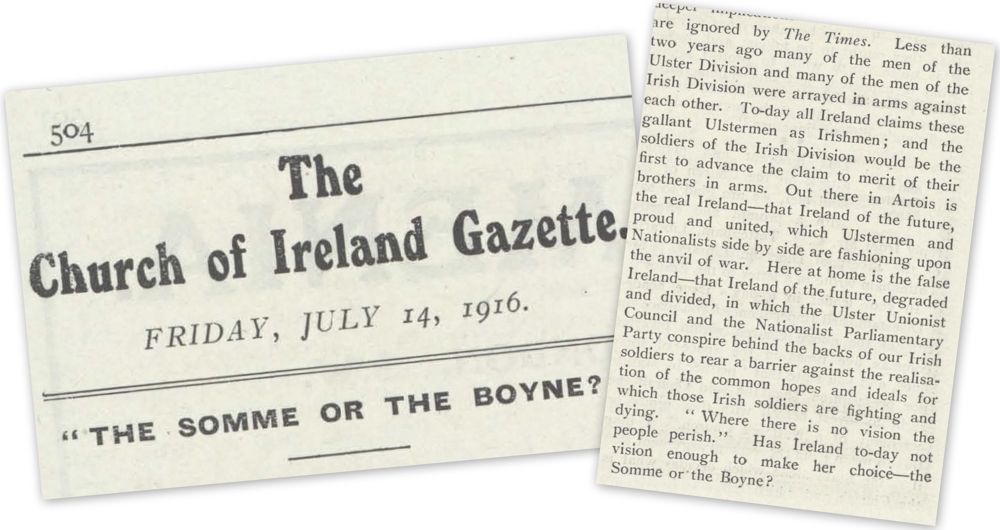CofI Gazette 1911-1923 digitised and searchable
The ongoing project to digitise the historical issues of the Church of Ireland Gazette has entered a new and exciting phase, with the successful uploading and indexing of this invaluable resource for the period 1911–1923. It is re–launched in January 2016 through the Church of Ireland website.
All the editions for the revolutionary period 1912–1922 (with an additional year either side of that) have been scanned and made fully searchable. This means that a total of 155 weekly editions may now be freely viewed and searched online by researchers all over the world, bringing to light this crucial period from a Church of Ireland perspective in general, and also making it possible to find hitherto hidden events, people and places through the pages.

Written and read by lay and clerical members of the Church of Ireland, the Gazette (in print since 1856) provides the longest–running public commentary on the opinions and attitudes of members of the Church of Ireland, and indeed the wider Protestant community on the island. It is thus a recognised resource for understanding the complexities and nuances of this identity, North and South. The project aims to make it available for research and public interest is a collaborative venture between the RCB Library (which holds the only complete hardcopy set) and the Editor and Board of the Gazette, and to date has been funded largely through sponsorship.
When it was launched in 2016, it was particularly appropriate that the Church of Ireland was able to shed light on how it viewed events such as the 1916 Rising and Battle of the Somme, and make another contribution to memory and knowledge for the Decade of Commemorations.

The Gazette was originally published and printed by its founder/proprietor Mr James Charles, from his premises at 61 Middle Abbey Street Dublin. From 1871 onwards however, editors were formally appointed. One of the more interesting periods in office was Ware W. Wells, a layman who played a prominent role in the paper’s editorial work between 1906 and 1916. The Gazette ‘s premises gave him a bird’s eye view of events unfolding in the area near the General Post Office.
As the lead article of the special edition 28 April–05 May noted, he was ‘probably at closer quarters with much of the fighting in the capital than any other civilian in Dublin’, with ‘access to special sources of information’ enabling him ‘to supply a lengthy and exhaustive analysis of the circumstances of the insurrection’. The edition (publication of which was suspended for a week because of the fighting) thus became an important contemporary source about events in Easter Week, and was reprinted and went to wide circulation for a general audience – well beyond the Church of Ireland community.

The offices in Middle Abbey Street reportedly had a remarkable escape from the fire which devastated the Sackville Street area, and it was the last building on its side of the street to be saved from the fire which ‘stopped immediately short of this office’. Interestingly, Wells described himself as ‘imparted of Nationalist sympathies’, and was noted for a pluralist and fair outlook. Indeed after his role at the Gazette ended, c. 1918, he went on to become editor of the Irish Statesman(a weekly journal promoting the views of the Irish Dominion League).
For a range of fascinating reports, insights and various topics, the public is invited to explore the Gazette.
The Church of Ireland Historical Centenaries Working Group wish to acknowledge the valuable contribution and support of the Commemorations Programme of the Department of Arts, Heritage and the Gaeltacht in bringing both these projects to completion.
The RCB Library, which manages the project, is delighted to acknowledge the support of the Irish Government for this significant contribution to knowledge, and service provider Informa for delivering the exceptionally high–quality search engine, which is available via this link from 1st January 2016: